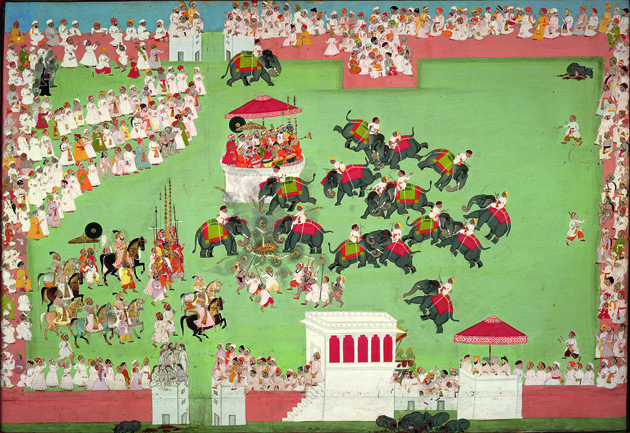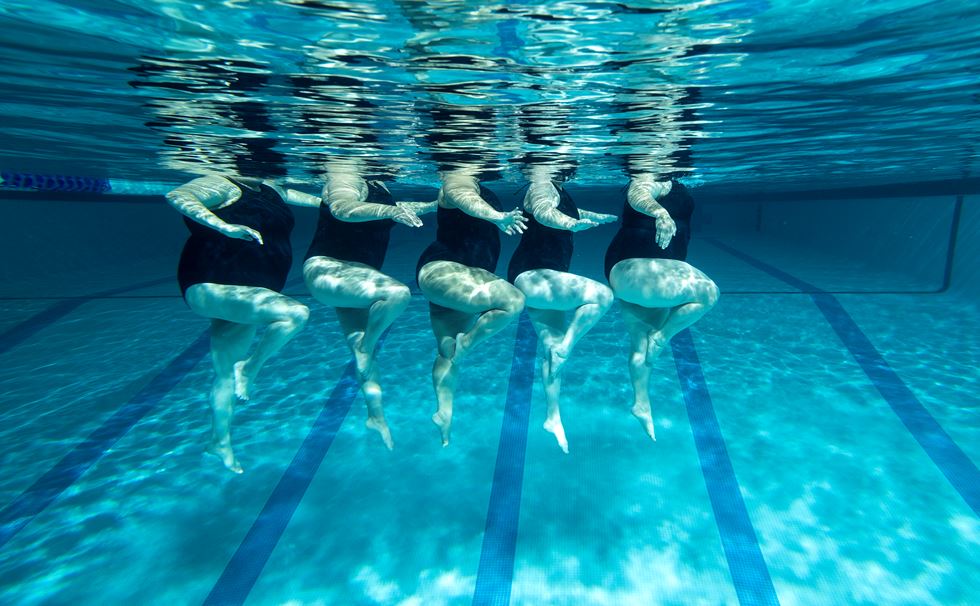My favourite painting: Nicholas Coleridge
Nicholas Coleridge chooses Maharana Jagat Singh attending an elephant fight by Syaji and Sukha as his favourite painting


Maharana Jagat Singh attending an elephant fight at the Chaugan during Navratri, 1750, by Syaji and Sukha, 25½in by 35in, The Udaipur City Palace Museum, Rajasthan, India
Nicholas Coleridge says: 'This was the picture that kick-started my love of Indian miniature painting and inspired me to start collecting them. I love the bird’s eye perspective, enabling you to see everything that’s happening, all the action across the courtyard, the colour and life. There are almost 500 figures in the picture—I counted—from the Maharana and his courtiers to the fire dancers and elephant mahouts to the naked sadhus perched on the gate. It’s like an 18th century Lowry, with so many characters, each of them different. It is the most joyful of paintings and I wish it belonged to me.'
Nicholas Coleridge is President of Condé Nast International and incoming Chairman of the V&A
John McEwen comments: 'This painting dates from the year before Jaghat Singh II died and shows the Navratri (‘Nine Nights’) festival at Udaipur. Jagat Singh was famed for his artistic patronage and the Hindu Navratri festival—the most famous takes place in the autumn—vaguely approximates to our harvest festival. In Udaipur, each day of Navratri began with a morning procession to the Chaugan arena led by the Maharana on his stately black horse, accompanied by nobles and attendants. Buffaloes were sacrificed—all but one of their carcases are seen at the bottom of the picture—followed by a fight between two mounted elephants, in this instance, Virabhadra and probably Aradal. The elephants are shown at various stages of the contest. 'They are controlled by attendants who excite them with goads and firecrackers while a naqqara (drums) and shehnai (mixed instruments) band performs on the bandstand. An audience of courtiers, townspeople and sadhus (holy men) line the walls. 'Sir Howard Hodgkin, the artist who is also renowned for his collection of Indian paintings, owns the other similarly large collaborative work by Syaji and Sukha for Jagat Singh. He has written: ‘For an artist there are elements of scale, form, and colour that are beyond verbal description. In Indian painting I have found much that for me could be found nowhere else, but I cannot tell you what—I can only metaphorically wave my arms at the pictures—and say look!’ One of his preferences is for elephants, especially when painted so that their ‘wild movement’ appears ‘almost weightless’.
Sign up for the Country Life Newsletter
Exquisite houses, the beauty of Nature, and how to get the most from your life, straight to your inbox.
Country Life is unlike any other magazine: the only glossy weekly on the newsstand and the only magazine that has been guest-edited by HRH The King not once, but twice. It is a celebration of modern rural life and all its diverse joys and pleasures — that was first published in Queen Victoria's Diamond Jubilee year. Our eclectic mixture of witty and informative content — from the most up-to-date property news and commentary and a coveted glimpse inside some of the UK's best houses and gardens, to gardening, the arts and interior design, written by experts in their field — still cannot be found in print or online, anywhere else.
-
 A mini estate in Kent that's so lovely it once featured in Simon Schama's 'History of Britain'
A mini estate in Kent that's so lovely it once featured in Simon Schama's 'History of Britain'The Paper Mill estate is a picture-postcard in the Garden of England.
By Penny Churchill
-
 Splash! A Century of Swimming and Style: A whistle-stop history, from the Roman Baths to Hampstead Heath
Splash! A Century of Swimming and Style: A whistle-stop history, from the Roman Baths to Hampstead HeathEmma Hughes dives into swimming's hidden depths at the Design Museum's exhibit in London.
By Emma Hughes
-
 'As a child I wanted to snuggle up with the dogs and be part of it': Alexia Robinson chooses her favourite painting
'As a child I wanted to snuggle up with the dogs and be part of it': Alexia Robinson chooses her favourite paintingAlexia Robinson, founder of Love British Food, chooses an Edwin Landseer classic.
By Charlotte Mullins
-
 The Pre-Raphaelite painter who swapped 'willowy, nubile women' for stained glass — and created some of the best examples in Britain
The Pre-Raphaelite painter who swapped 'willowy, nubile women' for stained glass — and created some of the best examples in BritainThe painter Edward Burne-Jones turned from paint to glass for much of his career. James Hughes, director of the Victorian Society, chooses a glass masterpiece by Burne-Jones as his favourite 'painting'.
By Charlotte Mullins
-
 'I can’t look away. I’m captivated': The painter who takes years over each portrait, with the only guarantee being that it won't look like the subject
'I can’t look away. I’m captivated': The painter who takes years over each portrait, with the only guarantee being that it won't look like the subjectFor Country Life's My Favourite Painting slot, the writer Emily Howes chooses a work by a daring and challenging artist: Frank Auerbach.
By Toby Keel
-
 My Favourite Painting: Rob Houchen
My Favourite Painting: Rob HouchenThe actor Rob Houchen chooses a bold and challenging Egon Schiele work.
By Charlotte Mullins
-
 My Favourite Painting: Jeremy Clarkson
My Favourite Painting: Jeremy Clarkson'That's why this is my favourite painting. Because it invites you to imagine'
By Charlotte Mullins
-
 The chair of the National Gallery names his favourite from among the 2,300 masterpieces — and it will come as a bit of a shock
The chair of the National Gallery names his favourite from among the 2,300 masterpieces — and it will come as a bit of a shockAs the National Gallery turns 200, the chair of its board of trustees, John Booth, chooses his favourite painting.
By Toby Keel
-
 'A wonderful reminder of what the countryside could and should be': The 200-year-old watercolour of a world fast disappearing
'A wonderful reminder of what the countryside could and should be': The 200-year-old watercolour of a world fast disappearingChristopher Price of the Rare Breed Survival Trust on the bucolic beauty of The Magic Apple Tree by Samuel Palmer, which he nominates as his favourite painting.
By Charlotte Mullins
-
 My favourite painting: Andrew Graham-Dixon
My favourite painting: Andrew Graham-Dixon'Lesson Number One: it’s the pictures that baffle and tantalise you that stay in the mind forever .'
By Country Life